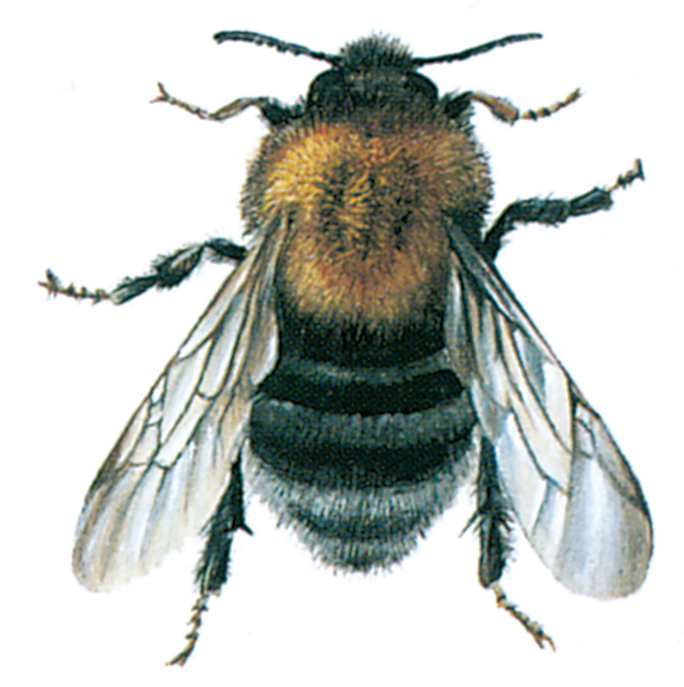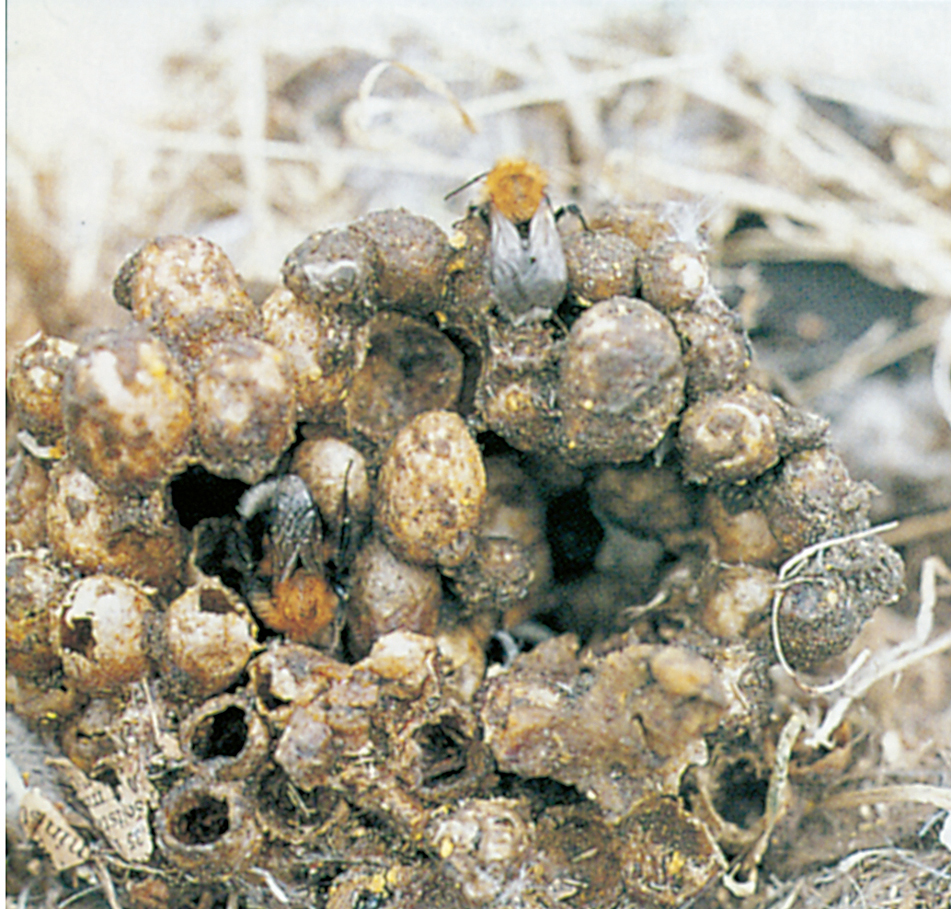
Unlike the honey bees, in which the whole colony survives the winter, a bumble bee colony only lasts for a single season. This means that all the workers die in the autumn, so that only a few young mated queens survive and spend the winter in hibernation.
The bumble bees seen in March flying low over the ground are usually these young queens, just emerged from their winter quarters, and now searching for suitable places in which to establish new colonies.
In northern Europe there are about 10 different species of bumble bee. The majority of these build their nests in the ground, in a deserted mouse hole or in between stones in a farm wall, but an empty nest box or a sparrow’s nest under the eaves may also be used. The species which nest most frequently in houses are Bombus lapidarius and B. hypnorum.
Once the queen has selected the site she starts to build her nest. If the space is too small she extends it – up to about the size of a clenched fist – and lines it with dry plants, moss or mouse hair. She builds a couple of small, neat cells out of wax, each about the size of a thimble, one for stores and one to lay eggs in. The larvae which hatch from the latter are fed by the queen, who also has to fetch pollen and nectar.
When fully grown the larvae pupate and a few days later they emerge as the first worker bumble bees of the year. They are sometimes very small, simply because their mother, the queen, has not been able to fetch sufficient food for them, but they now start to help with the building work and with collecting food, while the queen occupies herself more and more with egg laying.

Later on in the summer a bumble bee nest is well established with larval cells and stores alongside each other. It does not have the regular cells and the neat arrangement characteristic of a honey bee colony, nor is it so large, having at the most 400-500 occupants.
Besides being rather attractive bumble bees are beneficial to man, as they act as pollinators of many fruit trees and other plants in which man requires the seed to set.
There is therefore every reason to conserve bumble bees and they would not normally be troublesome in a house. They can, of course, sting (see p. 51), but only do so when seriously provoked.




